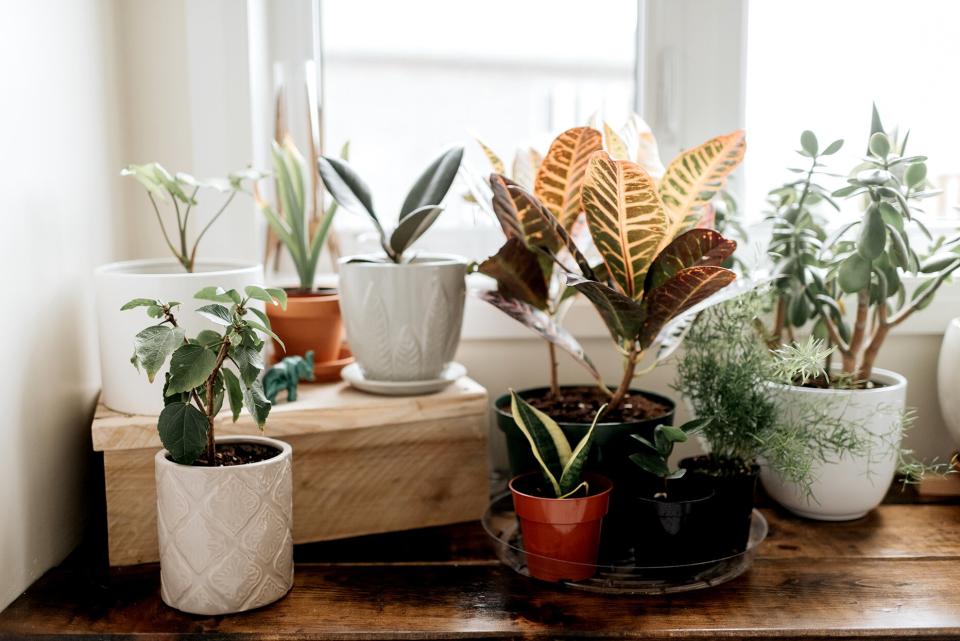The Best Food for Your Houseplants
Dotdash Meredith and Yahoo Inc. may earn commission or revenue on some items through the links below.

Getty / Sara Monika
Like all living things, houseplants need food—and the right diet can mean the difference between a plant that thrives or dies. If you have a flourishing indoor garden, you know that plants need three main "food groups," consisting of soil, water, and sun—but finding the right balance among all three can be challenging, especially if you're growing lots of varieties. That first element (soil!), however, also involves the vessels plants live in. "Repot your plants," says Robin Hilleary, the founder of floral design studio Fleurotica. "They soak up all the nutrients maybe every six months or so, so I recommend that people repot their plants once or twice a year so that they have plenty of room to spread out. This also ensures that there is lots of nutrients in the soil."
There's nothing wrong with giving them a little boost more frequently: Supporting your houseplants with fertilizer can promote growth, but, luckily, doesn't need to be done regularly. Eliza Bank, the founder of The Sill, recommends fertilizing in the spring ("You really don't need to fertilize in fall or winter," she notes), while you repot. "You'll see a noticeable difference if you fertilize your plants," she explains—but she maintains that simply repotting can have positive effects. "Even if you don't want to fertilize, just repotting your plants in fresh soil can have an impact." Think of soil as a multivitamin, she says, since plants become nutrient deficient easily. If you are going the fertilizer route, it's critical to buy a formula designed for what you're trying to grow, Bank advises: "A flower fertilizer can be very different from one for tomatoes or vegetables.
Related: How to Successfully Repot Your Houseplants
So, what's the best houseplant food? That answer depends on who you ask—some experts support that establishing the correct blend of soil and fertilizer (and timing application correctly) is necessary for growth. Others are purists who leave the plant food mixes found at a gardening center on the shelf, in favor of more natural options—or they simply prioritize creating the best possible environment for their plants. This is garden designer and founder of Green Fingers in New York and Tokyo Satoshi Kawamoto's take. "I usually do not use plant food unless it is absolutely necessary—and these occurrences are quite rare," he explains. And while he doesn't have a formula that he uses regularly, he does affirm that broad-spectrum food mixes ("Even from generic brands," he adds) are up to the job. His best advice? Choose a plant food that comes in liquid form, like Miracle-Gro's Water Soluble All-Purpose Plant Food ($12.98, amazon.com), to maximize nutrient absorption; they also work across a wider range of plants, he says.
Ultimately, the best food for your plants are the big three—sun, soil, and water. Blank advises stocking up on take-out chopsticks to test your plants' levels of the latter. "If they come out dry, you probably need to water the plant," she says. Finding the proper level of sunlight, however, is arguably the most important part of this equation. "The number one thing we need to remember is that the sun is food for plants," she continues. "For those who live in cities, maybe you have north facing windows. Maybe you have south or west facing windows—or a brick wall of the building next to you. You have to really consider the amount of light you have and use that to direct the type of plants you can purchase."

